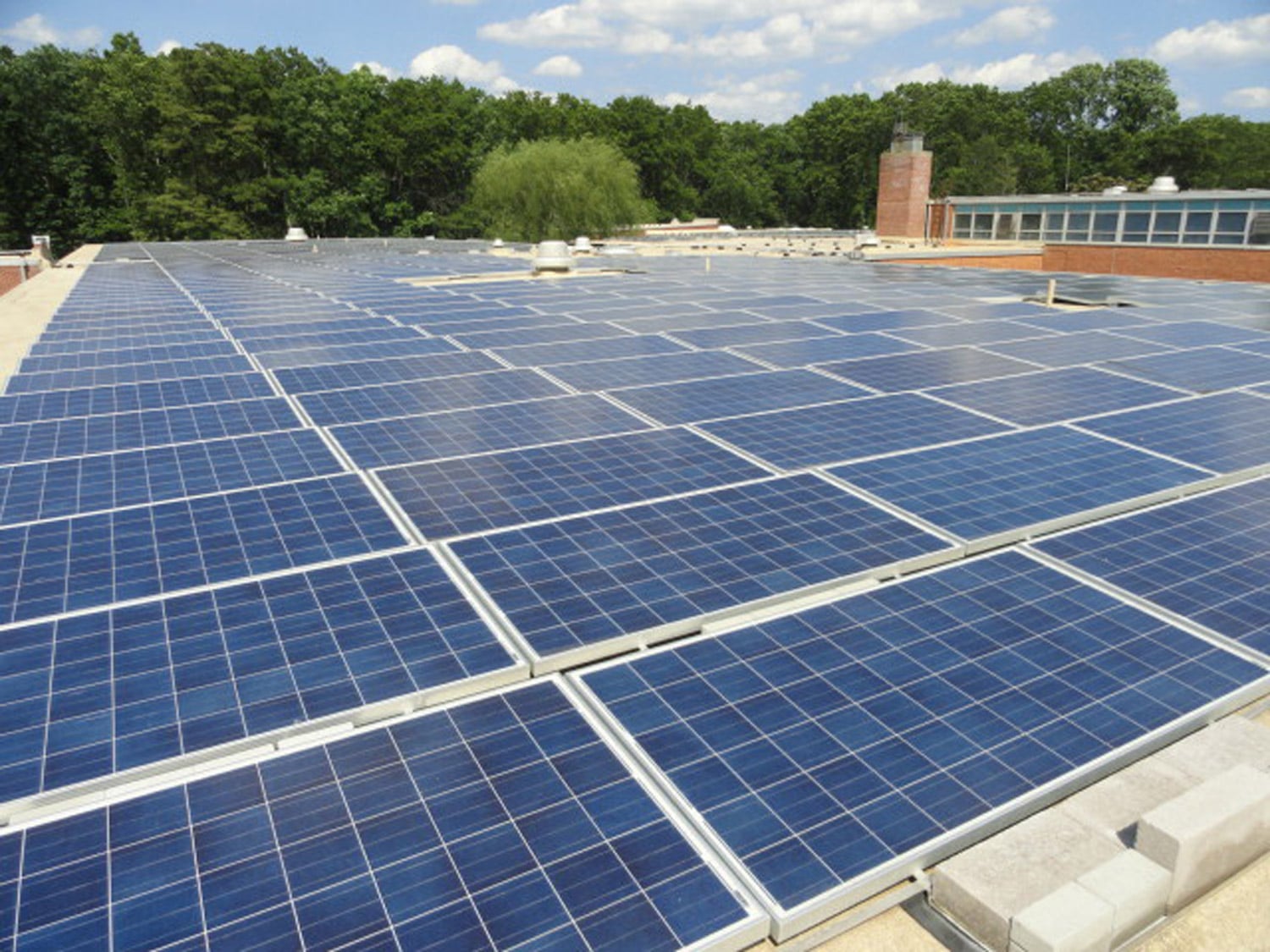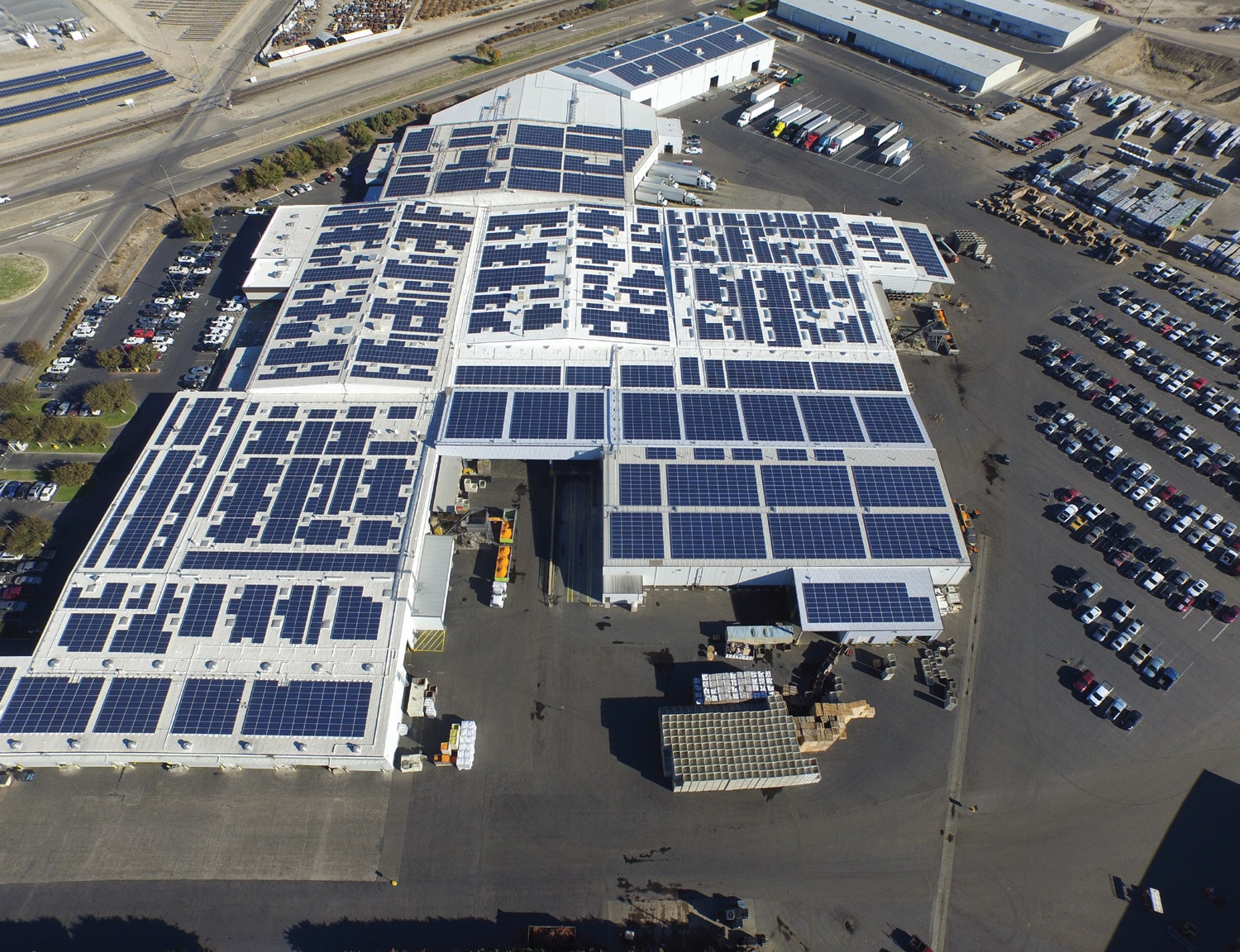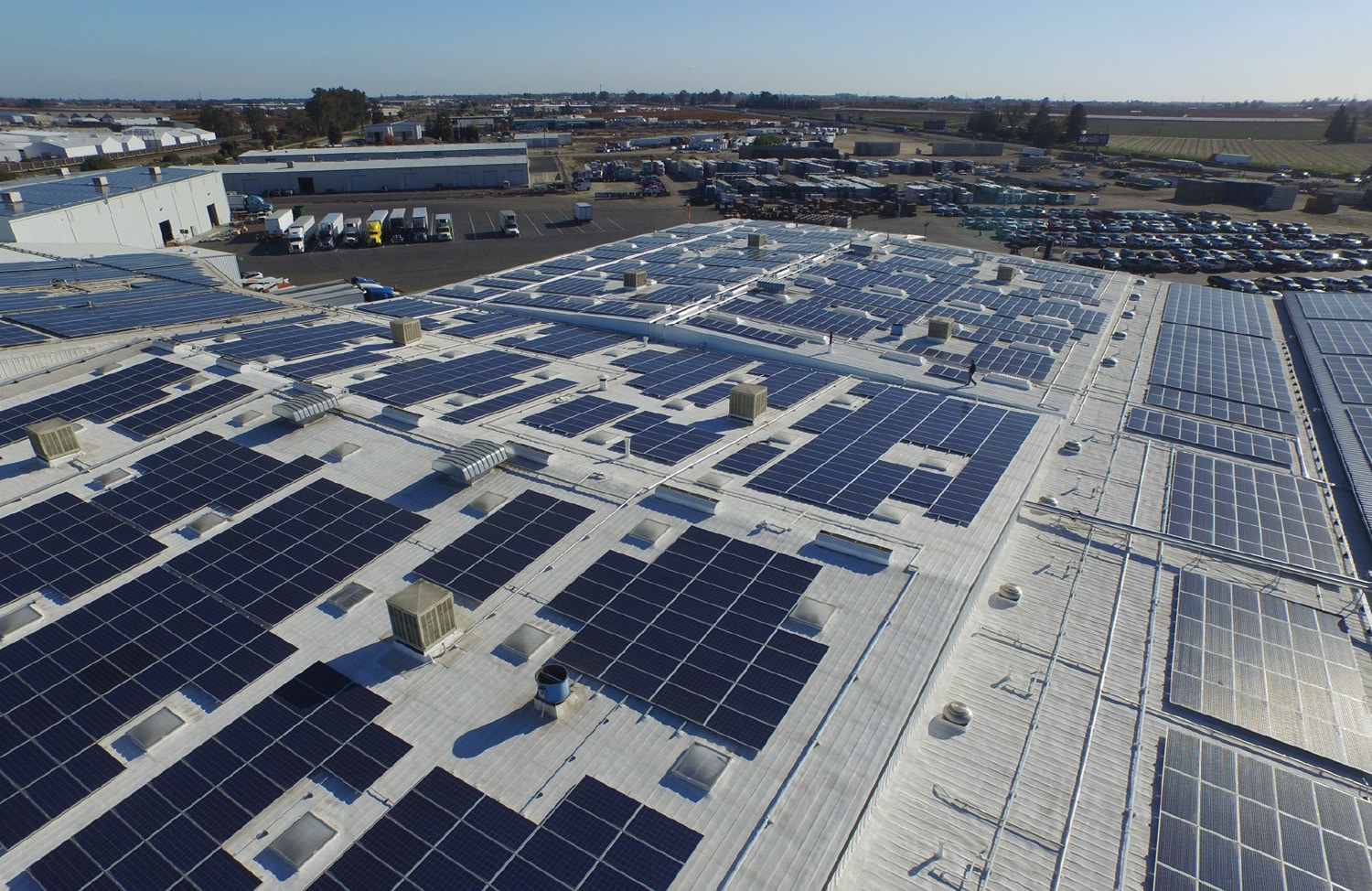
[Photo: Courtesy of Standard Solar]
Imagine a coastal property or commercial building after a hurricane—roof gone, debris everywhere. Metal roofs degrade over time, as screws become loose, metal rusts, and structures weaken, according to Daryl Pilon, director of business development at Standard Solar, Inc. But close your eyes and imagine a metal roof with Accella’s fortifying spray foam roofing system and you’ll see a different picture—one much like the photos Pilon was recently shown of schools in Tom’s River, New Jersey, after Hurricane Sandy.
“They had no problems with the solar, and they had no problems with the roof—whereas on nearby buildings, roofs had been sucked off. There’s a strengthening element to SPF (spray polyurethane foam) that is real,” Pilon says.
Bob Burwasser, Accella’s northeast commercial manager of SPF roofing and insulation, showed Pilon such images to exemplify just how well Accella’s solutions work. Their spray foam roofing system on its own is one of the best options out there, with the highest R-value on the market and an environmental focus.

[Photo: Courtesy of Standard Solar]
What is the Spray Foam Roofing System?
The Accella spray foam roof system is a spray-in-place insulation made of a rigid, closed-cell plastic foam formed through the mixing of an Iso and a special resin blend. The materials ultimately bond to themselves so there are no joints, seams, or penetrating fasteners—so no leaking. Multiple layers of SPF can be sprayed in place to achieve the desired thickness of insulation, and flashings and roof details can be tied-in with the spray installation.

[Photo: Courtesy of Standard Solar]
Just Add Solar
“Spray foam roofing is a great fit for a commercial photovoltaic project,” says Luke Nolan, president of Central Coating Company. “In many cases, the installation of a new SPF roof will increase the energy efficiency of a facility, decreasing the electrical load. This integration of load reduction with PV generation can maximize the ROI of a solar project.”
The spray foam roofing system and solar panels are often sold together—and for good reason. Imagine you want to install solar panels; you may be tempted to simply install them on your existing roof for upfront cost savings, but this may not be the best plan, according to Pilon. He says modern solar panels can produce 85% of their original energy output at the 25-year mark, but you’d likely need to repair or replace most roofs before that time. “The marriage between roofs and solar arrays is really important,” he says. “You wouldn’t want to put a 25-year system on a
10-year roof.”
One of the biggest perks of the spray foam roof system is its longevity; with proper maintenance, it can outlive your building. “As long as it is coated periodically (every 15 to 25 years with a UV-protective liquid-membrane), it can outlast the life of a building.”
But consider another exciting benefit—reflectivity. Because the Accella spray roof system includes a highly reflective coating, you can capitalize on the reflectivity of the roof, in addition to the direct sun, and generate even more energy. Talk about clever.
Of course, one of the most important metrics for insulation is how well a material insulates, or its R-value. The higher the R-value, the more thermal transfer is prevented. Spray foam just so happens to have the highest R-value on the insulation market. The R-value of traditional fiberglass insulation ranges from R-3 to R-4, compared to closed-cell spray foam, which can reach up to nearly R-7. Accella’s spray foam products are insulating enough to save anywhere from 30 to 50% on energy costs. “Spray foam is airtight, vapor tight, and has the highest R-value on the market,” Burwasser says.

[Photo: Courtesy of Standard Solar]
Cutting-Edge Solutions
Accella is also acutely focused on research and development. The company employs a team of 25 scientists and researchers who help develop cutting-edge polyurethane systems like BaySeal, Foamsulate, and QuadFoam—open and closed cell foam structures alike. This science-minded approach combined with the acquisition of more than 10 company acquisitions makes Accella uniquely qualified to produce top-of-the-line, innovative products.
But not all spray foam insulation is created equally. In years past, green architects and designers often looked down on spray foam insulation because of its hydrofluorocarbon blowing agents, which have had a high global warming potential, or GWP. However, the current generation of SPF has zero global warming potential. Products like Accella’s QuadFoam NatureSeal OCX insulation have zero ozone depleting blowing agents, catalysts, or polyols. The QuadFoam 500 uses water as the blowing agent.
It’s innovations like these—plus the longevity and energy savings provided by Accella’s spray foam roof system in general—that are making buildings greener by the project. And Burwasser says that innovation isn’t going away any time soon. “We continuously strive to develop user-friendly, higher-insulative materials, with no negative impact to the environment.”

[Photo: Courtesy of Standard Solar]
Why This Matters
The Accella Spray Foam Roofing System is practical, safe, and sustainable. With no seams or penetrating fasteners, it gives your building’s roof a durable coating that protects and prolongs its life as well as provides increased insulation and a reflective coating for better energy efficiency and savings. In a nutshell, it provides:
-
The best insulation
-
Unbeatable durability
-
Superior leak protection
-
The most flexibility
-
ROI in an average of 4 years
Learn more about Accella Performance Materials and see related content about roofing systems.

